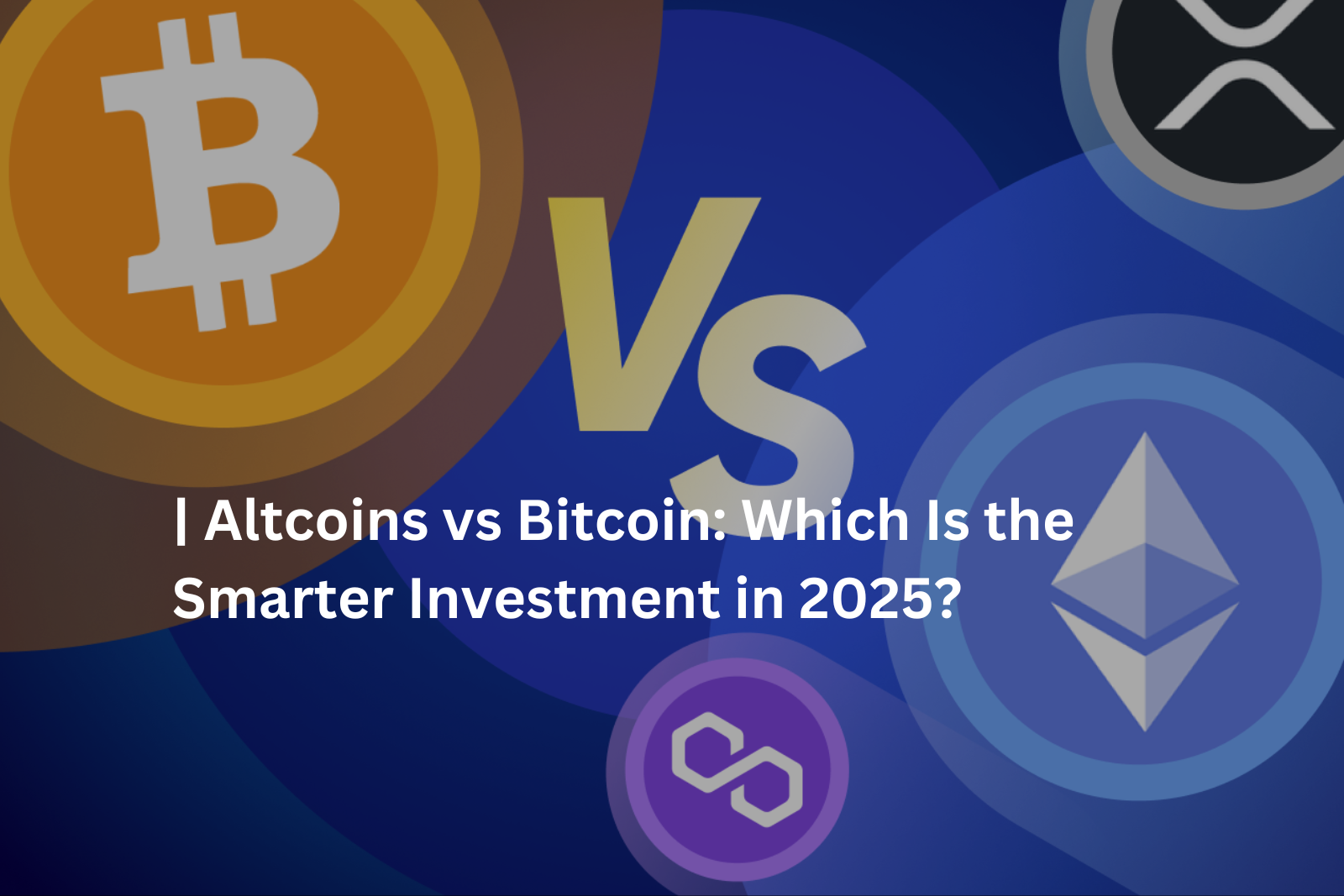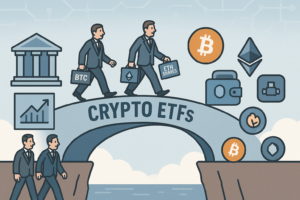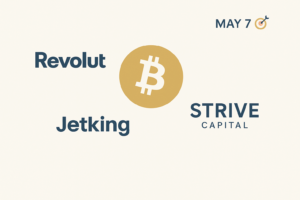
As 2025 begins, the cryptocurrency market is evolving rapidly, presenting investors with both new opportunities and risks. Bitcoin, the original and most recognized cryptocurrency, has maintained its position as the market leader. However, with the rise of alternative cryptocurrencies, or altcoins, investors are now asking: Which is the smarter investment in 2025—Altcoins vs Bitcoin?
This article delves into the Altcoins vs Bitcoin debate, exploring their investment potential for 2025 and the key factors that could impact their performance moving forward. Whether you are a seasoned crypto trader or a new investor, understanding the differences between Altcoins vs Bitcoin is essential for making informed decisions in this dynamic market.
What Are Altcoins and Bitcoin?
Before we analyze the investment potential of Bitcoin and altcoins, it is important to define each term.
Bitcoin (BTC) was created in 2009 by an anonymous figure known as Satoshi Nakamoto. It is the first decentralized digital currency, meaning it operates without a central authority such as a bank or government. Bitcoin’s primary value lies in its scarcity (only 21 million BTC will exist), its security through blockchain technology, and its status as a store of value in the crypto world.
Altcoins, meanwhile, are cryptocurrencies other than Bitcoin. The term “altcoin” stands for “alternative coin” and encompasses thousands of cryptocurrencies, each with unique features and use cases. Some popular altcoins include Ethereum (ETH), Binance Coin (BNB), Cardano (ADA), and Solana (SOL). While altcoins offer innovative solutions and higher return potential, they also tend to have more volatility and risk compared to Bitcoin.
Bitcoin in 2025: Stability and Institutional Adoption
As of 2025, Bitcoin continues to hold its dominant position in the cryptocurrency market, despite the emergence of numerous altcoins. Bitcoin’s dominance is due in large part to its status as the first and most widely recognized cryptocurrency. It is often referred to as “digital gold” because of its limited supply and its ability to serve as a hedge against inflation and traditional market volatility.
Bitcoin’s Role in 2025
By 2025, Bitcoin will likely continue to be the cornerstone of the crypto market. Institutional adoption is expected to increase, with more banks, hedge funds, and asset managers incorporating Bitcoin into their portfolios. Bitcoin ETFs (Exchange-Traded Funds) and futures contracts will likely become more mainstream, providing easier access to institutional investors.
Bitcoin’s store of value narrative is expected to remain a key draw for investors seeking stability in the crypto market. With its proven security, limited supply, and widespread recognition, Bitcoin may outperform many other assets in terms of long-term growth potential, making it an attractive choice for low-risk investors.
Why Invest in Bitcoin in 2025?
- Institutional Support: Increased institutional involvement will provide more liquidity and stability to Bitcoin’s price.
- Hedge Against Inflation: Bitcoin is often viewed as a hedge against inflation, much like gold, especially during uncertain economic times.
- Security and Proven Track Record: Bitcoin’s blockchain has a decade-long history of security, which makes it resistant to fraud and hacking.
- Widespread Adoption: More businesses and individuals accepting Bitcoin will strengthen its value proposition as a global currency.
Altcoins in 2025: Innovation and High-Risk-Reward Opportunities
While Bitcoin is considered the safest bet in the cryptocurrency market, altcoins offer unique opportunities that can potentially lead to higher returns. Altcoins often serve specific use cases, such as smart contracts (Ethereum), decentralized finance (DeFi), privacy (Monero), or faster transactions (Solana).
Why Invest in Altcoins in 2025?
- Innovation and Utility: Many altcoins address real-world problems. For example, Ethereum enables the creation of decentralized applications (dApps) and smart contracts, while Solana offers fast transaction processing.
- Higher Growth Potential: While altcoins are riskier, they often offer greater room for price appreciation. Newer projects and platforms can lead to huge returns for early investors.
- Diversification: Diversifying your portfolio with a mix of altcoins can help spread risk. While Bitcoin may remain stable, altcoins offer the potential for more dramatic price movements.
Key Altcoins to Watch in 2025
- Ethereum (ETH): As the second-largest cryptocurrency by market cap, Ethereum’s transition to Ethereum 2.0 (Proof of Stake) in 2025 is expected to increase scalability and reduce energy consumption.
- Solana (SOL): Known for its high-speed transactions and low fees, Solana is gaining traction in the DeFi and NFT sectors.
- Polkadot (DOT): Polkadot’s interoperability between blockchains makes it a leader in the future of multi-chain blockchain solutions.
- Cardano (ADA): Cardano focuses on scalability, sustainability, and security, which could make it a long-term player in the blockchain ecosystem.
The Risks of Investing in Altcoins
Although the potential for higher returns exists, investing in altcoins comes with significant risks. Many altcoins are subject to high volatility and rapid price fluctuations. Moreover, the altcoin market is still young and susceptible to factors like technological failures, intense competition, and regulatory changes.
Key Risks of Investing in Altcoins
- High Volatility: Altcoins are generally more volatile than Bitcoin, which makes them riskier for short-term investors.
- Regulatory Uncertainty: Governments worldwide are still determining how to regulate cryptocurrencies. Crackdowns on altcoins could negatively affect their value.
- Project Failure: Many altcoins are in the early stages, and some may not survive long.
- Market Manipulation: Smaller market capitalization and lower liquidity make altcoins more vulnerable to market manipulation.
Altcoins vs Bitcoin: Which Is the Smarter Investment in 2025?
Choosing between Altcoins vs Bitcoin depends on your investment goals, risk tolerance, and market outlook.
- If you seek stability and long-term growth, Bitcoin is likely the smarter investment. With its proven track record, limited supply, and increasing institutional adoption, Bitcoin is an attractive option for investors looking for a reliable store of value.
- If you are looking for higher returns and are willing to take on more risk, altcoins may offer better opportunities. While they are speculative and volatile, altcoins could lead to significant gains, especially with emerging projects that disrupt industries.
A Balanced Approach to Crypto Investing
For investors in 2025, a balanced approach might be the best strategy. Bitcoin offers stability, security, and long-term growth potential, while altcoins provide opportunities for higher returns and innovation. Diversifying your portfolio with a mix of Bitcoin and select altcoins can help mitigate risks while maximizing opportunities.
As with any investment, it’s crucial to do your research, stay updated on market trends, and evaluate your financial goals before making any decisions. By doing so, you can choose the right investment strategy for your portfolio in 2025, whether that includes Bitcoin, altcoins, or a combination of both.













Your point of view caught my eye and was very interesting. Thanks. I have a question for you. https://www.binance.com/register?ref=IHJUI7TF